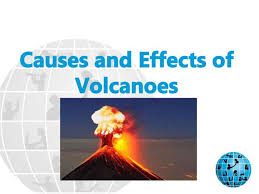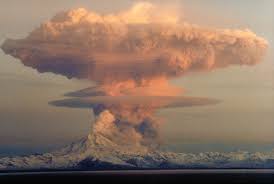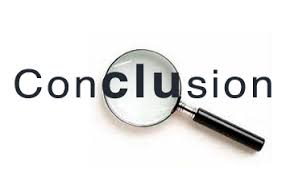Student Name:
Course: GEOL 203 – Introduction to Physical Geology
Institution: [Your University Name]
Instructor: Dr. [Instructor’s Name]
Date:
Title: Causes and Effects of Volcanic Eruptions in Different Geological Settings
Abstract
Volcanic eruptions are one of Earth’s most powerful and transformative natural processes, occurring in diverse geological settings across the globe. This paper explores the fundamental causes of volcanic eruptions, focusing on the tectonic and magmatic mechanisms responsible for their formation. It categorizes volcanic activity in divergent, convergent, and intraplate settings and examines their respective eruption styles. Furthermore, the paper highlights the wide-ranging effects of volcanic eruptions—from environmental and climatic changes to human health and socioeconomic disruptions. Case studies such as Mount St. Helens (USA), Kīlauea (Hawaii), and Eyjafjallajökull (Iceland) are analyzed to demonstrate setting-specific volcanic behavior and impact. The study concludes with a discussion on monitoring, prediction, and mitigation strategies aimed at minimizing volcanic risks.
1. Introduction
Volcanoes have fascinated humans for centuries, both for their destructive power and their role in shaping the Earth’s landscape. Despite their awe-inspiring nature, volcanic eruptions can cause catastrophic damage to life, property, and the environment. Understanding the causes and effects of these eruptions in various geological settings is crucial for geologists, urban planners, and disaster management agencies. The purpose of this paper is to investigate how geological setting influences the causes and consequences of volcanic eruptions.
2. What Causes Volcanic Eruptions?
Volcanic eruptions are primarily caused by the movement and interaction of tectonic plates and the behavior of magma beneath Earth’s surface.
2.1 Plate Tectonics and Magma Generation
The Earth’s lithosphere is divided into tectonic plates that move atop the asthenosphere. Their movement leads to zones of volcanism:
-
Divergent Boundaries – Plates move apart, allowing magma to rise (e.g., Mid-Atlantic Ridge).
-
Convergent Boundaries – One plate subducts under another, melting and generating magma (e.g., Pacific Ring of Fire).
-
Hotspots – Magma plumes rise from deep within the mantle independently of plate boundaries (e.g., Hawaiian Islands).
2.2 Magma Composition and Pressure Build-up
Magma contains dissolved gases. As pressure builds within a magma chamber, gases exsolve and expand. If the overlying rock cannot contain this pressure, an eruption occurs. The viscosity of magma influences eruption style:
-
Basaltic magma (low viscosity): Effusive eruptions
-
Andesitic/rhyolitic magma (high viscosity): Explosive eruptions
3. Types of Geological Settings and Associated Volcanism
3.1 Divergent Plate Boundaries
At mid-ocean ridges or continental rifts, such as the East African Rift, plates diverge and magma emerges through fissures, creating new crust.
Example: Iceland (Mid-Atlantic Ridge)
-
Frequent effusive eruptions (e.g., Fagradalsfjall, 2021)
-
Creation of new land
-
Low-explosivity, high fluidity of basaltic lava
3.2 Convergent Plate Boundaries
Here, subduction zones form volcanic arcs, such as the Andes or the Japanese archipelago.
Example: Mount St. Helens (USA, 1980)
-
Highly explosive eruption due to viscous magma and trapped gases
-
Pyroclastic flows and widespread ashfall
-
Created a caldera and devastated forests
3.3 Intraplate (Hotspot) Volcanism
Volcanoes can also form away from plate boundaries due to mantle plumes.
Example: Kīlauea, Hawaii
-
Shield volcano with frequent non-explosive eruptions
-
Creation of extensive lava fields
-
Risk mainly from lava flows and gas emissions
4. Effects of Volcanic Eruptions
The consequences of volcanic activity vary widely depending on the eruption type and setting.
4.1 Environmental and Ecological Effects
-
Positive: Creation of fertile soils (e.g., Java, Indonesia), new land (Iceland), geothermal energy
-
Negative: Ash clouds, acid rain, habitat destruction, air pollution
4.2 Climatic Impact
Large eruptions release sulfur dioxide into the stratosphere, forming aerosols that reflect sunlight and cool the climate.
Example: Mount Pinatubo (Philippines, 1991)
-
Reduced global temperature by ~0.5°C for 2 years
-
Demonstrated volcano-climate feedback mechanisms
4.3 Human and Economic Effects
-
Deaths, injuries, and displacement of communities
-
Damage to infrastructure, agriculture, and aviation
-
Long-term economic downturn in affected regions
Case: Eyjafjallajökull (Iceland, 2010)
-
Moderate eruption, but ash cloud disrupted European air travel for weeks
-
Losses of ~$1.7 billion in airline industry
5. Case Study Comparison
| Feature | Divergent (Iceland) | Convergent (Mt. St. Helens) | Hotspot (Kīlauea) |
|---|---|---|---|
| Plate Setting | Mid-Atlantic Ridge | Cascadia Subduction Zone | Pacific Plate over plume |
| Eruption Style | Effusive, low viscosity | Explosive, high viscosity | Effusive, low viscosity |
| Major Hazards | Lava flows, gas | Pyroclastics, lahars, ash | Lava, vog (volcanic smog) |
| Impact Scale | Local to regional | Regional to global | Local |
6. Monitoring and Mitigation
6.1 Prediction Tools
-
Seismic activity monitoring (e.g., volcanic tremors)
-
Gas emission analysis (e.g., SO₂ levels)
-
Satellite imagery (thermal anomalies, deformation)
6.2 Mitigation Strategies
-
Hazard mapping and land-use planning
-
Public awareness campaigns
-
Evacuation drills and emergency response plans
7. Volcanic Landforms and Their Formation by Setting
Each geological setting contributes to the creation of distinctive volcanic landforms. Understanding these helps to identify eruption styles and hazard levels.
7.1 Divergent Boundaries: Rift Volcanoes and Fissure Vents
-
Mid-ocean ridges and continental rifts (like the East African Rift) are places where plates diverge, causing the mantle to melt and magma to ascend.
-
Volcano type: Shield volcanoes and fissure vents
-
Lava: Basaltic, low in silica, highly fluid
-
Example: Laki fissure in Iceland (1783) released an enormous volume of lava over months, causing famine and climatic disturbances.
7.2 Convergent Boundaries: Stratovolcanoes
-
Occur where oceanic crust subducts under continental or oceanic crust.
-
Volcano type: Stratovolcano (composite volcano)
-
Lava: Andesitic to rhyolitic, viscous, gas-rich
-
Hazards: Pyroclastic flows, lahars, dome collapses
-
Example: Mount Fuji (Japan), Mount Merapi (Indonesia)
7.3 Intraplate Hotspots: Shield Volcanoes and Calderas
-
Found in the interior of tectonic plates above mantle plumes.
-
Volcano type: Shield volcanoes, volcanic islands
-
Eruption style: Gentle, frequent eruptions
-
Hazards: Lava flows, volcanic gases (sulfur dioxide, CO₂)
-
Example: Mauna Loa and Kīlauea, Hawaii
8. Social, Economic, and Psychological Effects
8.1 Social Displacement
-
Eruptions can displace entire communities.
-
Example: The 1995 Soufrière Hills eruption on Montserrat forced two-thirds of the island’s population to permanently evacuate.
-
Long-term issues: poverty, migration, loss of cultural identity.
8.2 Economic Collapse
-
Agricultural loss due to ash fall.
-
Tourism decline, especially in volcano-dependent economies.
-
Infrastructure damage: roads, airports, and buildings may be buried or destroyed.
-
The 2010 Eyjafjallajökull eruption cost the global airline industry over $1.7 billion in just one week.
8.3 Mental Health Impacts
-
Volcanic disasters cause trauma, anxiety, and post-disaster stress disorder.
-
Survivors often suffer from long-term fear of another eruption.
-
Children in affected areas tend to experience educational disruption and psychological instability.
9. Secondary Hazards
Volcanoes also trigger secondary hazards that can be even deadlier than the eruption itself:
9.1 Lahars (Volcanic Mudflows)
-
Formed when pyroclastic material mixes with water or melting snow.
-
Can travel at over 60 km/h and bury entire towns.
-
Example: Nevado del Ruiz, Colombia (1985): Lahars killed over 23,000 people in Armero.
9.2 Tsunamis
-
Underwater eruptions or flank collapses can displace water and cause massive tsunamis.
-
Example: Krakatoa (1883) caused a tsunami that killed over 36,000 people.
9.3 Acid Rain and Air Pollution
-
SO₂ and other gases mix with atmospheric water, forming acid rain.
-
Damage to crops, corrosion of buildings, and respiratory illnesses.
-
Volcanic smog (vog) from Hawaiian volcanoes causes long-term health risks.
10. Long-Term Environmental and Geologic Contributions
Despite the risks, volcanoes are essential to Earth’s evolution:
10.1 Land Creation
-
Islands like Hawaii, the Galápagos, and Iceland owe their existence to volcanic activity.
-
Volcanic islands serve as natural laboratories for evolution and biodiversity.
10.2 Soil Fertility
-
Volcanic ash breaks down into mineral-rich soil (e.g., Java, Indonesia), making such regions highly fertile and agriculturally productive.
10.3 Atmospheric Regulation
-
Volcanic CO₂ emissions have played a role in Earth’s climate evolution.
-
The presence of water vapor and carbon dioxide in ancient eruptions contributed to the formation of Earth’s early atmosphere.
11. Global Volcanic Risk Zones
Volcanic risk is unevenly distributed:
11.1 Pacific Ring of Fire
-
Most volcanically active area, encircling the Pacific Ocean.
-
75% of Earth’s volcanoes and 90% of its earthquakes occur here.
-
Countries at high risk: Japan, Indonesia, Philippines, Chile, Mexico.
11.2 Mediterranean-Asian Belt
-
Includes volcanic areas in Italy, Greece, and Turkey.
-
Example: Mount Vesuvius near Naples is one of the most dangerous volcanoes due to population density.
11.3 Intraplate Hotspot Chains
-
Examples: Hawaiian Islands, Canary Islands, Réunion.
-
Typically less explosive, but long-duration lava flows can reshape landscapes.
12. Advances in Volcanic Forecasting and Technology
12.1 Modern Monitoring Techniques
-
Seismometers: Detect underground magma movement.
-
Gas spectrometers: Measure sulfur and carbon dioxide levels.
-
Satellite remote sensing: Track thermal anomalies, deformation, and gas plumes.
-
Ground deformation (InSAR and GPS): Tracks the swelling or sinking of volcanic domes.
12.2 Real-Time Alert Systems
-
Countries like Japan and the United States operate tiered alert systems.
-
USGS Volcanic Alert Levels: Normal, Advisory, Watch, and Warning.
-
Community preparedness drills and evacuation routes are essential.
12.3 Role of AI and Machine Learning
-
AI models are increasingly used to analyze volcanic seismic data and predict eruptions.
-
Improves response time and reduces false alarms.
13. Recommendations for High-Risk Regions
-
Urban planning: Avoid dense settlements in hazard zones.
-
Education: Increase public knowledge on early signs of eruptions.
-
Resilience building: Invest in infrastructure that can withstand ash and lava.
-
International collaboration: Share data and research globally through platforms like the Global Volcano Model (GVM).
Volcanic eruptions are driven by a complex interplay of geological processes, varying significantly depending on the tectonic setting. While they can create life-enabling environments, their destructive potential remains immense. By studying volcanoes in different settings—from Iceland to Hawaii—we can better predict their behavior and reduce the harm they cause. Continued investment in research, monitoring, and community preparedness is essential to coexist with these formidable natural forces.
Final Thoughts
Volcanoes are a powerful reminder of Earth’s inner dynamics. From peaceful lava flows in Hawaii to the explosive destruction in Pompeii, the planet’s geology can change in an instant. Understanding the causes and effects of volcanic eruptions in different geological settings equips humanity with knowledge to better forecast, adapt, and respond to these phenomena. With rising global populations and climate shifts, volcanic risk mitigation will only grow more important in the 21st century.
References
-
Sigurdsson, H. (Ed.). (2015). The Encyclopedia of Volcanoes. Academic Press.
-
USGS. (2024). Volcano Hazards Program. https://volcanoes.usgs.gov
-
Global Volcanism Program. (2023). Smithsonian Institution. https://volcano.si.edu
-
Tilling, R. I., Heliker, C., & Swanson, D. A. (2010). Eruptions of Hawaiian Volcanoes. USGS General Interest Publication.
-
Scarth, A. (2009). Vulcan’s Fury: Man Against the Volcano. Yale University Press.





